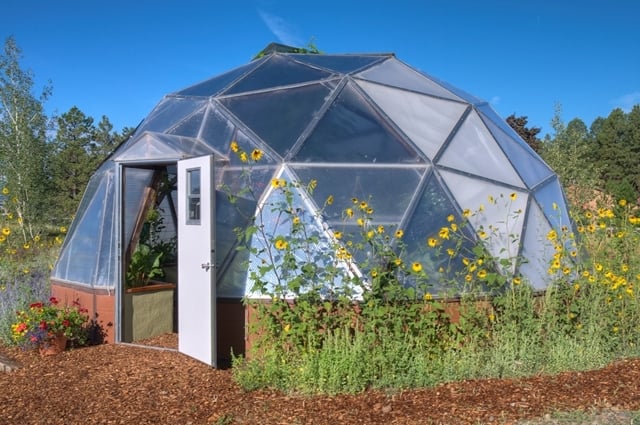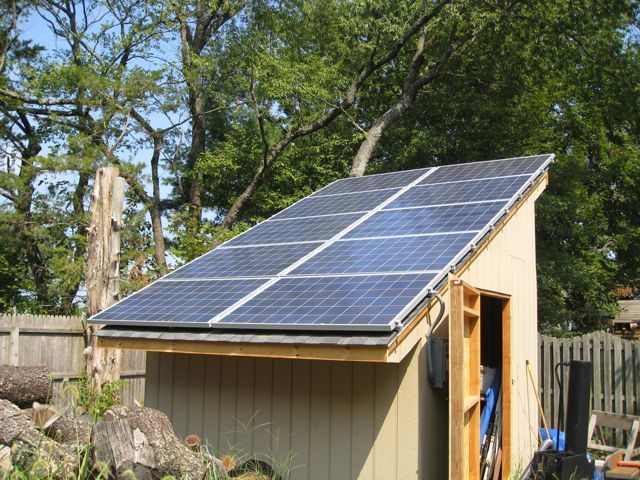Growing your own vegetables can be a rewarding and cost-effective way to provide fresh produce for you and your family, even during the coldest months of the year.
With the use of geodesic domes and effective mulching techniques, it is possible to cultivate a variety of vegetables in cold weather conditions, allowing you to enjoy a bountiful harvest no matter the season.
By leveraging these innovative methods, you can extend your growing season and enjoy fresh, delicious vegetables all year round.
Choose the right location
Select a location that receives at least 6 hours of direct sunlight per day. Make sure the location is level and has good drainage.
This will ensure that your plants receive the necessary light to grow and thrive.
Look for a location that receives full sun, which means direct sunlight without any obstructions or shade.
Avoid areas with dense tree cover or tall structures that may block sunlight.
In addition to sunlight, make sure the location is level and has good drainage.
A level surface will prevent water from pooling and root rot, while good drainage will help prevent waterlogged soil and root decay.
Check the soil composition and ensure that it drains well, or consider adding amendments to improve drainage.
Ensure that the location you choose is accessible and easy to maintain.
A location that is too far away from your home or lacks easy access may be more difficult to tend to and maintain, leading to reduced yields and disappointment.
By choosing the right location, you’ll be well on your way to creating a successful and productive backyard garden.
Prepare the site
Clear the area of any debris or vegetation, and level the ground. Use a garden fork to loosen the soil to a depth of about 8 to 10 inches.
To ensure a successful and efficient vegetable garden, it is essential to properly prepare the site before planting.
Clear the area of any debris or vegetation, and level the ground to create a smooth and even surface.
Use a garden fork to loosen the soil to a depth of about 8 to 10 inches, breaking up any clumps and improving drainage.
This will create a well-draining and fertile growing medium for your vegetables to thrive.
Be sure to remove any rocks or debris that may be present in the soil, as these can cause problems for your plants as they grow.
By taking the time to properly prepare the site, you can create a foundation for a successful and productive garden.
Build the geodesic dome
Construct the dome using PVC pipes and fittings, and cover it with a layer of plastic sheeting. The dome will provide protection from wind, snow, and extreme temperatures.
To construct the geodesic dome, you will need a set of PVC pipes and fittings, as well as a layer of plastic sheeting to cover the structure.
Start by connecting the PVC pipes to form the basic framework of the dome, using elbow joints and T-fittings to create a strong and stable structure.
Next, attach the plastic sheeting to the framework, using cable ties or clips to secure it in place.
The plastic sheeting will provide a waterproof and durable layer of protection for the dome, shielding it from wind, snow, and extreme temperatures.
When constructing the dome, be sure to use a level to ensure that the structure is even and stable, and use reinforced PVC fittings to secure any joints or seams.
With these materials and careful construction, you can build a sturdy and effective geodesic dome that will provide long-lasting protection from the elements.
Use a cold frame
Install a cold frame on the south-facing end of the dome to trap heat and provide a more stable microclimate for your plants. The cold frame will help to extend the growing season.
Installing a cold frame on the south-facing end of your dome-shaped greenhouse is an excellent way to trap heat and create a more stable microclimate for your plants.
By doing so, you can significantly extend the growing season and provide your plants with the ideal conditions for growth.
The cold frame works by using a transparent roof and walls made of a material with low thermal conductivity, such as double-glazed glass or plastic.
This design allows sunlight to enter the cold frame and heat up the inside environment, while the thermal mass of the dome absorbs and retains the heat throughout the day.
As the temperature inside the cold frame rises, it creates a more stable and warmer microclimate for your plants, which can be up to 4°C warmer than the outside environment.
The extended growing season provided by the cold frame allows you to grow a wider variety of plants, including those that require warmer temperatures to thrive.
This can include vegetables like tomatoes, peppers, and cucumbers, as well as flowers and herbs.
The stable microclimate created by the cold frame can help to reduce the risk of pests and diseases, as many pests and diseases are more prevalent in cold and damp conditions.
To install a cold frame on the south-facing end of your dome-shaped greenhouse, you will need to build a wooden or plastic frame, and then attach the transparent roof and walls.
You can also add a ventilation system to regulate the temperature and humidity inside the cold frame, ensuring that your plants receive the perfect amount of heat and moisture for optimal growth.
With the help of a cold frame, you can enjoy a longer and more productive growing season, no matter the time of year or your location.
Add insulation
Use a thick layer of mulch (straw or wood chips) around the base of the dome to insulate the soil and keep it from freezing. This will help to keep the roots of your plants warm during the winter months.
Insulating your geodesic dome garden with a thick layer of mulch is an essential step to protect your plants from harsh winter weather.
By surrounding the base of the dome with straw or wood chips, you can create a barrier that prevents the soil from freezing, thus keeping the roots of your plants warm and healthy.
This is especially important for plants that are sensitive to cold temperatures, such as citrus trees, berry bushes, and vegetables like broccoli and cauliflower.
When using mulch, it’s essential to ensure that the layer is thick enough to provide adequate insulation.
Aim for a depth of at least 4-6 inches (10-15 cm) of mulch around the base of the dome.
This will help to keep the soil at a consistent temperature, even in the coldest of winter months.
You can mix in some compost or well-rotted manure into the mulch to provide additional nutrients for your plants.
By incorporating insulation into your geodesic dome garden design, you can enjoy a longer growing season and protect your plants from extreme temperatures.
This will give you the flexibility to grow a wider variety of crops, including those that are typically challenging to grow in cold climates.
With proper insulation, you can extend the growing season and enjoy a more productive and sustainable garden.
Use a hoop house
A hoop house is a temporary greenhouse made from plastic pipes and fittings. It provides additional protection for your plants during the colder months, and can be removed or disassembled during the warmer months.
Using a hoop house can be an excellent way to extend the growing season for your plants, especially during the colder months.
This temporary greenhouse is made from plastic pipes and fittings, which provide a protective and insulated environment for your plants to thrive.
By placing the hoop house over your beds, you can protect your plants from harsh weather conditions such as frost, snow, and wind.
The plastic covering also allows for more sunlight to reach your plants, which can help them grow more robustly.
The hoop house can be removed or disassembled during the warmer months, allowing for maximum ventilation and light penetration.
Overall, a hoop house can be a valuable investment for any gardener looking to extend their growing season and improve their plant yields.
Use row covers
Row covers are lightweight, porous fabrics that can be placed over individual plants to protect them from frost and freezing temperatures. They can be removed during warmer days to allow for more sunlight and ventilation.
Row covers are a versatile and effective tool for protecting individual plants from frost and freezing temperatures.
These lightweight, porous fabrics are designed to allow sunlight and ventilation while keeping out the harsh elements.
Simply place the row cover over the plant, securing it with stakes or pins as needed.
The row cover will protect the plant from frost and freezing temperatures, while also allowing for optimal sunlight and air circulation.
This makes row covers an ideal solution for early season planting, as they can be removed during warmer days to allow for more sunlight and ventilation.
In addition, row covers can also help to control pests and diseases, as they provide a physical barrier between the plant and any potential threats.
Overall, row covers are a simple and effective solution for protecting your plants from frost and freezing temperatures, while also promoting healthy growth and development.
Choose cold-hardy plants
Grow plants that are well-suited for cold weather and can tolerate frost and freezing temperatures. Some examples of cold-hardy plants include kale, spinach, broccoli, and root vegetables.
Choosing cold-hardy plants is a important step in preparing your garden for winter.
These plants are specially adapted to thrive in cold weather and can tolerate frost and freezing temperatures, making them ideal for harvesting during the winter months.
Some examples of cold-hardy plants include kale, spinach, broccoli, and root vegetables such as carrots, beets, and turnips.
These plants have evolved to withstand the cold temperatures and can continue to grow and produce fruit even in the frostiest of conditions.
For example, kale can tolerate temperatures as low as 15°F (-9°C), while spinach can survive even colder temperatures, down to 0°F (-18°C).
Broccoli and root vegetables are also hardy and can continue to grow throughout the winter, providing a bountiful harvest long after other plants have given up.
By choosing cold-hardy plants, you can extend the growing season and enjoy a fresh supply of produce even in the coldest of winters.
Want More? Dive Deeper Here!
Hey there! If you’re the type who loves going down the rabbit hole of information (like we do), you’re in the right spot. We’ve pulled together some cool reads and resources that dive a bit deeper into the stuff we chat about on our site. Whether you’re just killing time or super into the topic, these picks might just be what you’re looking for. Happy reading!






